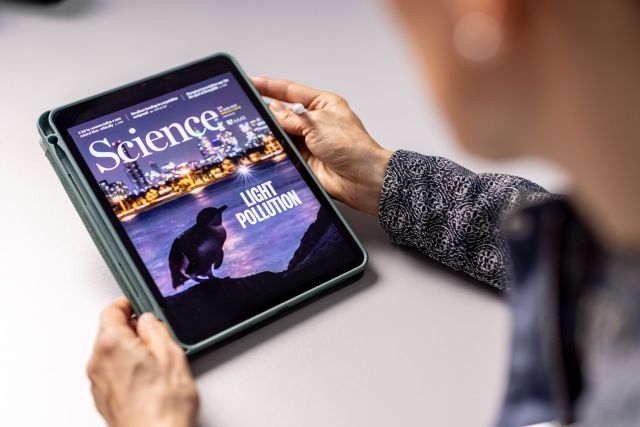Principal Investigator
:
Dr Eng. Arch., Dipl.-Ing. Arch. [FH] Karolina M. Zielinska-Dabkowska IALD, IES, RIBA
Gdańsk University of Technology
Panel: NZ6
Funding scheme
: MINIATURA 4
announced on
1 June 2020
In 2001, scientists discovered a new type of specialised cell in the human eye, different from other photoreceptors (rods and cones): intrinsically photosensitive retinal ganglion cells (ipRGC). This confirmed that apart from being necessary for normal visual perception, light is also responsible for various non-visual functions; it plays a key role in activating the circadian clock and has a range of important biological effects essential for human health, productivity and well-being. These effects depend on its wavelength (ipRGCs, which contain the photoreceptor protein melanopsin, absorb blue light with wavelengths of c. 460–480 nm), but also on its intensity, quantity and duration. These findings also provided new insights into the importance of daytime exposure to natural light, as well as the biological need for darkness in the evening and at night. Recent advances in semiconductor light technologies, with light sources such as LEDs, and their increasing availability have dramatically changed how architects, designers and lay people illuminate their interiors and outdoor spaces. Unfortunately, new studies confirm that the commonly used white LED light sources, which also emit high levels of blue light wavelength, are inappropriate and even harmful. In line with current guidelines regarding public health and environmental hazards, new LED light sources should not be put on the market without prior, thorough research that allows observation and understanding not only of the technical aspects of these new technologies, such as energy economy and efficiency, but also their impact on human health and the environment. This crucial process has been neglected. To date, little basic research, be it theoretical or experimental, has been done to generate insights that could guide decisions aimed at minimising the harm done by this phenomenon[1].
 Karolina Zielińska-Dąbkowska, photo by Łukasz Bera
This research project, carried out at the KTH Royal Institute of Technology, School of Architecture, Division of Lighting Design in Sweden, allowed the most suitable metrics and lighting methods to determine the light environment appropriate for human habitation and minimise the negative impacts of artificial light to be identified. Following an analysis of multiple new indicators, melanopic equivalent daytime illuminance (melanopic EDI) (D65) at eye level was determined to be the most suitable.
Karolina Zielińska-Dąbkowska, photo by Łukasz Bera
This research project, carried out at the KTH Royal Institute of Technology, School of Architecture, Division of Lighting Design in Sweden, allowed the most suitable metrics and lighting methods to determine the light environment appropriate for human habitation and minimise the negative impacts of artificial light to be identified. Following an analysis of multiple new indicators, melanopic equivalent daytime illuminance (melanopic EDI) (D65) at eye level was determined to be the most suitable.
In addition, the project identified the best criteria for selecting the technical parameters for artificial lighting design, such as spectral power distribution (SPD), intensity and two flicker metrics. Parameters such as correlated colour temperature (CCT) and colour rendering index (CRI) proved irrelevant. Moreover, we tested tools such as the CIE α-opic Toolbox (the open access online tool that allows the effective radiation intensity for all photoreceptors, ipRGCs, rods and cones to be calculated, which in turn implies circadian, neuroendocrine and neurobehavioural effects). The values of the melanopic equivalent illuminance and equivalent daytime illuminance inform the designer how effectively a given source of light inhibits the production of the sleep hormone, melatonin. Higher values are beneficial for daytime scenarios and encourage activity, while lower values are recommended for nighttime scenarios and before sleep.
In this context, the discovery represents an original contribution to a research-based and analytical approach that can foster a more health-conscious design of interior lighting in spaces intended for long-term use, such as offices, schools or hospitals. The knowledge can also be applied to outdoor lighting design. It is also an original, analytical contribution to the global state of research in this field. It should be of particular relevance to the countries of Northern Europe, where artificial light is used for many months each year because of the insufficient presence of natural daylight.
The findings were outlined in a paper entitled “Reducing nighttime light exposure in the urban environment to benefit human health and society” published in the prestigious “Science” journal, of which I am the first and corresponding author. DOI: 10.1126/science.adg5277
[1] Dodd N., Donatello S., McLean N., Casey C. i Protzman B., 2021. Level(s) indicator 4.3: Lighting and Visual Comfort user manual: introductory briefing, instructions and guidance (publication version 1.1)
Read also an interview with Karolina Zielińska-Dąbkowska - "Keeping light under control"
Project title: Identification and evaluation of measurable parameters of visual and non-visual effects of light
Dr Eng. Arch., Dipl.-Ing. Arch. [FH] Karolina M. Zielinska-Dabkowska IALD, IES, RIBA
In 2013, she earned her PhD degree (with distinction) in architecture and urban planning at the Gdańsk University of Technology; in 2014, her PhD dissertation also won the Polish Prime Minister’s Award. Following several years spent working abroad as a lighting architect, she returned to Poland in 2018 to work as an Assistant Professor at the Faculty of Architecture of the Gdańsk University of Technology and the co-founder and co-director of the GUT LightLab, where she studies different aspects of natural and artificial light in the built environment. As of 2019, she also heads ILLUME, an interdisciplinary, interfaculty research group established in order to minimise the impact of artificial light pollution on people, fauna and flora. The group has won a grant under Horizon Europe (2024-2027), in which she serves as the principal co-investigator. Her research has been outlined in scientific articles published in international research journals such as Nature Journal, Science and Nature Scientific Reports, and in 2015, her research into the non-visual effects of light on people, fauna and flora earned her the PLD-R Professional Lighting Design Recognition Award for "Research". In 2020, she also received the international IDA Galileo Research Award.


